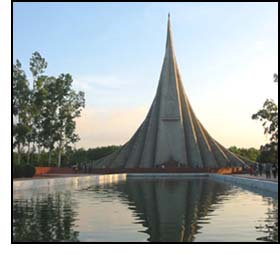
During Muslim rule in Bengal, many new cities were built and adorned with palaces, forts, monumental gateways, free-standing victory-towers, mosques, mausoleums, roads and bridges, the remains of which are scattered over all the country. The Middle Age in Bengal saw the construction of a large number of Islamic monuments which were characterized by massive arches and bold clean lines.
When the Muslims conquered India, they were already possessed of a highly developed architecture of their own, which is characterized by such distinguishing features as the arch, the dome, the minaret and the mihrab, - features common everywhere in the Islamic world-and fundamentally based upon the building traditions of Western and Central Asia.
The Muslims revolutionalized architecture in Bengal by introducing new and improved techniques and certain common architectural features, generally associated with Islam. However these features were considerably enriched with regional building traditions.
The Savar Monument is a Bangladeshi landmark, and was designed and created to honor those who lost their lives for the independence of Bangladesh.